- A day by day account of glorious Indic heritage in Cambodia including visit to Param Vishnu Lok (Angkor Wat). Govt of India must promote Indic tourism to Southeast Asia.
We travelled to Cambodia in February 2024. This is part of the brief winter in Cambodia and also the dry season, so it's a good time to visit. This travelogue is not intended to be a historical record and neither does it cover the traumatic recent history of Cambodia.
Rather, it focuses on the strong
historical links of the country with India. I am not a professional historian,
but have a strictly amateur interest in Indian history. Out of the six days, we
spent first four days in Siam Reap and next two in Phnom Penh.
There was so much to see and think about
in Cambodia! Enjoy the read.
Day 1
We flew in by Viet Jet the Vietnamese budget airline from Hanoi to the spanking new airport at Siam Reap. It's about an hour’s drive from the town and the temple complex so that the monuments can be protected from pollution and noise. The drive in the evening passed through forest land and little villages that looked similar to Indian hamlets. Cambodia has a per capita GDP a little lower than India with a population density that is far less.
In the daytime, the countryside around
Siam Rep looked a bit like Southern Tamil Nadu. Arid with rain fed paddy
cultivation (we went in February which is the dry season), palm trees with
mango and cashew plantations as well. The soil looks like red laterite again
similar to South India.
We were very fortunate to have the
services of an excellent English speaking guide during our whole stay in the
Siam Reap area. This is invaluable and anybody going to visit the place should
get a good guide.
Day 2
There is a visitor ticket that you can
buy for one day or more that allows for entry to the whole temple area. This
includes your photo and is non transferable. The process was quite quick and
you could use an international credit card at a very well designed and laid out
ticket office.
After buying the three day tickets, the
day began with visits to several temples in the Siam Reap area.
During the Angkor period (lasting from
802 CE when the Khmer Hindu king, Jayavarman II declared himself a God King up
to the late 14th Century), virtually all the kings built temples, so there are
plenty to go around! Most of them were Shiva
temples built of brick and sometimes stone.
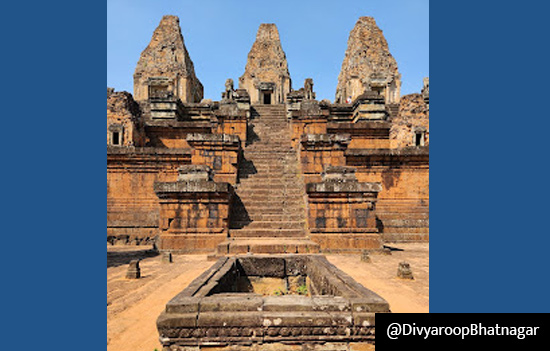
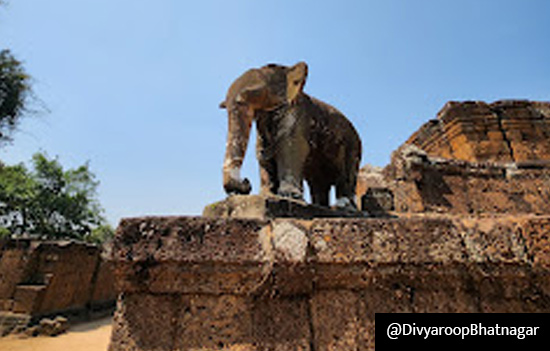
Sometime later, Buddhism began to gain
ground and Jayavarman VII (1181 - 1220 CE) became a Buddhist, so we saw some
Buddhist temples also. The depiction of a large Buddha bust as part of the
temple Gopuram was a unique feature of these temples.
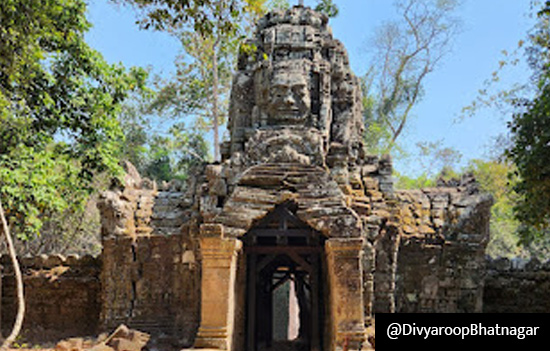
What was also interesting
was the continued presence of Hindu gods even in Buddhist temples.
Another feature that we found repeatedly in many places was a depiction of the Samudra Manthan with devas and asuras
with the Naga forming a railing across bridges even in modern construction.
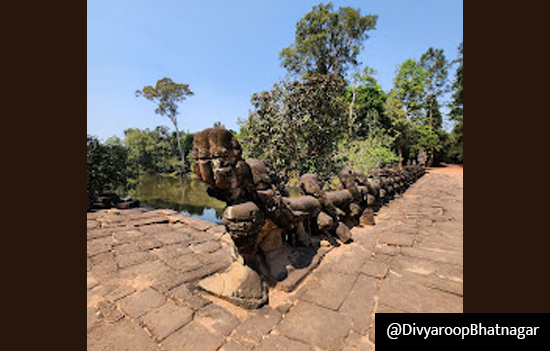
Later in the evening, we went to the Phnom
Bakheng Temple (late 9th Century) which is located on top of a hill to see
the sunset. Phnom means hill in Khmer as we discovered. The scenery was
magnificent but so were the Apsara carvings on the wall of the temple.
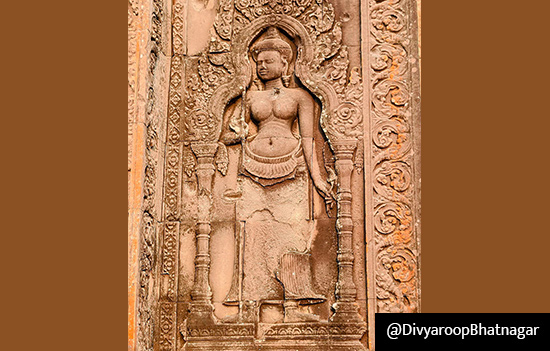
We returned to the hotel for dinner and
an early night as we were going to see Angkor Wat at dawn.
Day 3
We woke up early to see Angkor Wat at
dawn. Cars have to be parked some distance away and we had to walk a
considerable distance to cross the moat and enter the temple. Inside there are
two reflecting ponds and the view of the temple
reflected in the water as the sun rises is magnificent. There was a huge
crowd of tourists but it was a relatively peaceful experience. As the sun was
about to rise the temples were bathed in a glorious red colour making the early
start worthwhile.
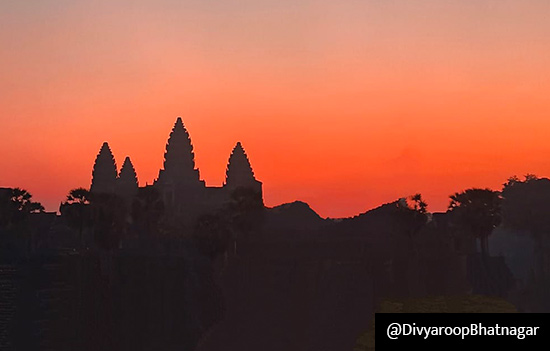
The Param
Vishnu Lok (original name of Angkor Wat) created by the Khmer King
Suryavarman II, in the 12th Century lives up to its name and how! It is simply
huge. The site covers an area of over 400 acres with the outer wall measuring
3.6 Km. The moat is really like an enormous lake more than 5 Km long. Later, we
went up in a helium balloon that gave us a better idea of the scale and
expanse. I understand that this is the largest religious site in the world.
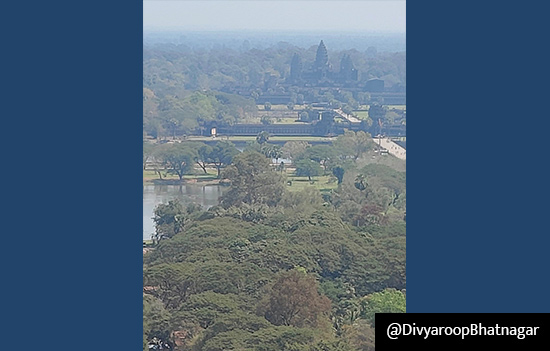
There are enormous galleries each carved with scenes from the Mahabharat and Ramayan and the Amrit Manthan. I've never seen anything on this scale before.
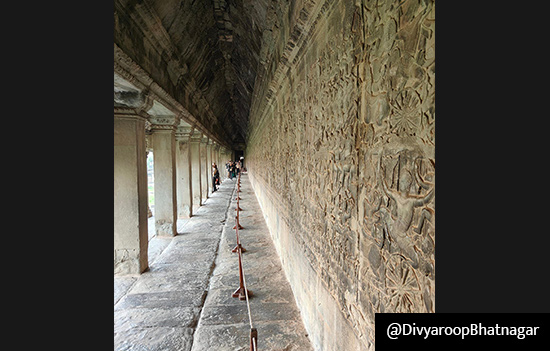
In later centuries, as Buddhism took
over in Cambodia, the main Vishnu statue in the sanctum sanctorum was displaced
by an equally beautiful Buddha statue.
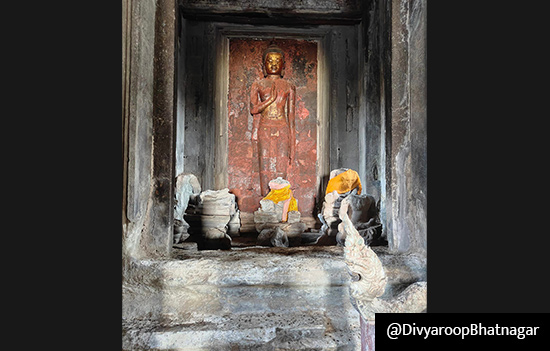
Vishnu is now relegated to a side
gallery but he is still revered. Along with the change of religion, the name of
the temple was changed to the more mundane Angkor Wat simply meaning the temple
of the city.
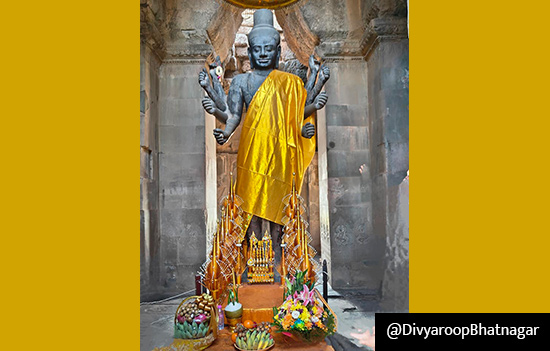
In the afternoon, we visited the richly
decorated Bayon Buddhist temple.
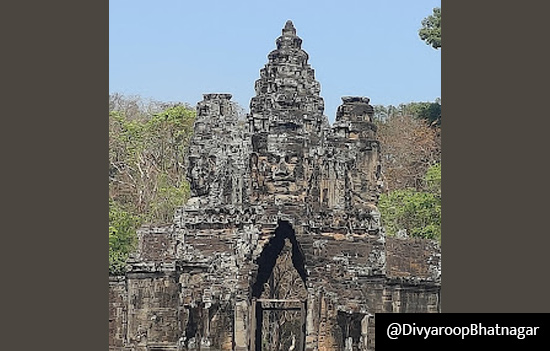
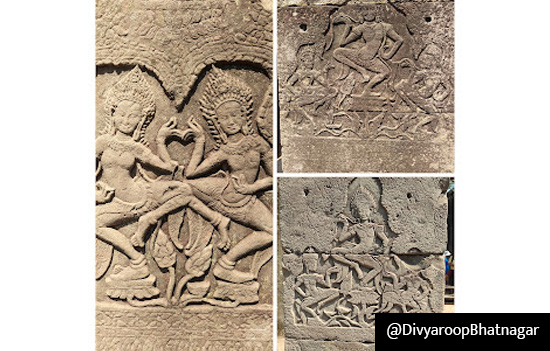
This was followed by a visit to the Ta
Prohm (Ancestor Brahma) temple. This is best known for featuring in the
Lara Croft epic, The Tomb Raiders. It's also known as the tree temple as it has huge silk cotton and strangler fig trees literally growing out of the temple walls. An amazing reclamation of the buildings by nature!
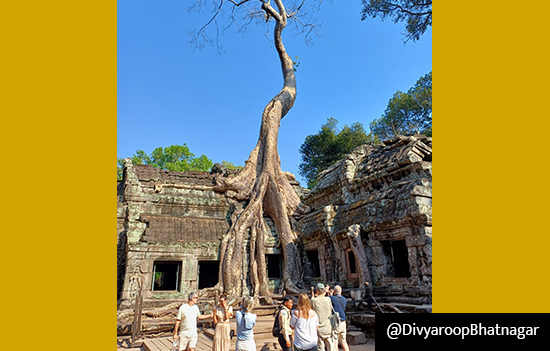
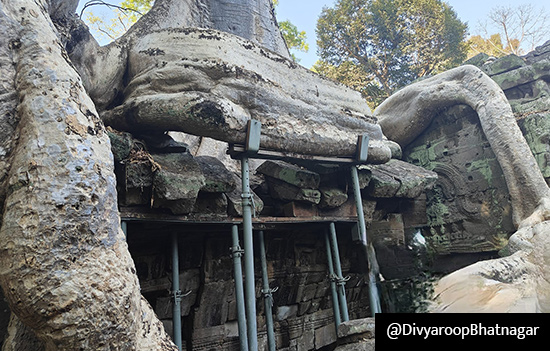
However, the key interesting point that
I found was the excellent restoration work being done
by the Indian Govt under the auspices of the ASI. This is a very long
term, painstaking project and the work done so far in restoring a whole area
where the roof had fallen in is really commendable and one of the best examples
of restoration being done in the Angkor Wat area. Similarly, a gopuram on the boundary
wall.
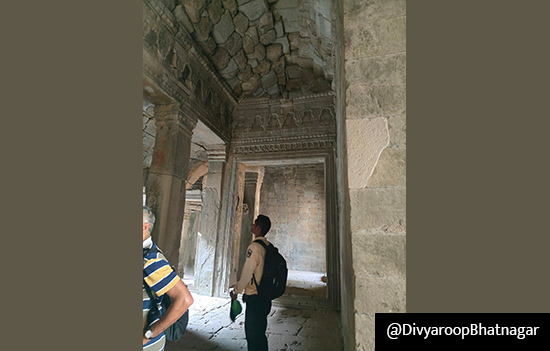
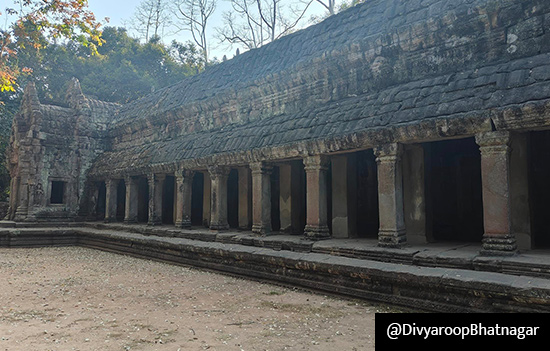
The Ta Prohm temple was built over a
vast area in the late 12th century and early 13th century by the Khmer King
Jayavarman VII. It was built as a Buddhist temple as by that time the Khmer
king had adopted Buddhism as his religion.
Day 4
And the best was surely reserved for the
last! After the grandeur of Angkor Wat and the wilderness of Ta Prohm it was
difficult to imagine that we would see something so exquisite. We started off
with a visit to the 1000 lingas. Carved out of the rocky bed of a small flowing river the lingas are so numerous that you can't count them. They end with a very large linga and a carving of Vishnu resting on the Shesh Nag all in the river bed with water flowing over them. It's an extraordinary depiction and an inclusive one as well.
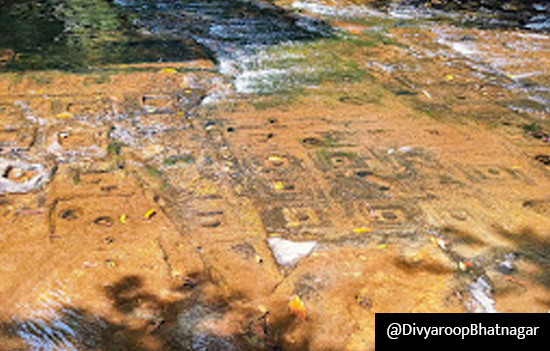
We also visited a Buddhist temple
on a hill that had statutes of Shiva and Ganesh as well. A Buddhist priest was
pouring water over a Shiv Linga and the people were taking the water and
pouring it on their heads before worshiping at the Buddhist temple.
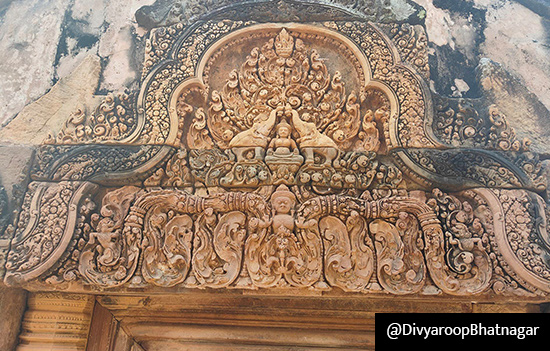
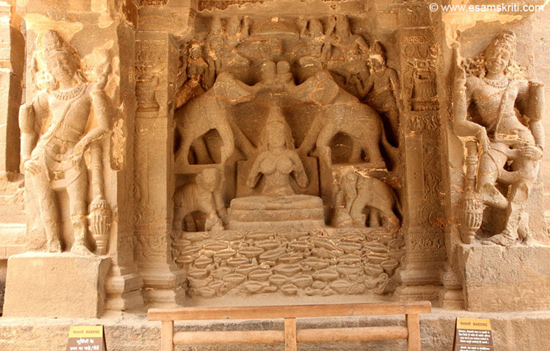 Entrance Kailasa Temple Ellora. Gajalakshmi seated on a lotus with elephants pour water by way of ritual adoration.
Entrance Kailasa Temple Ellora. Gajalakshmi seated on a lotus with elephants pour water by way of ritual adoration.
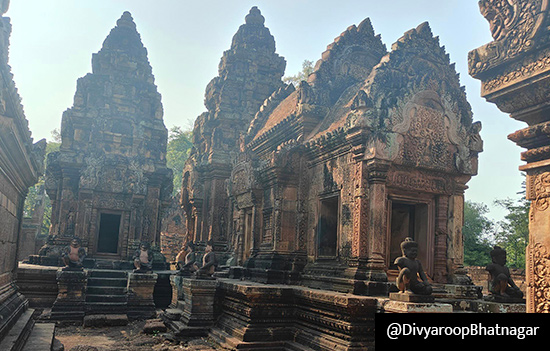
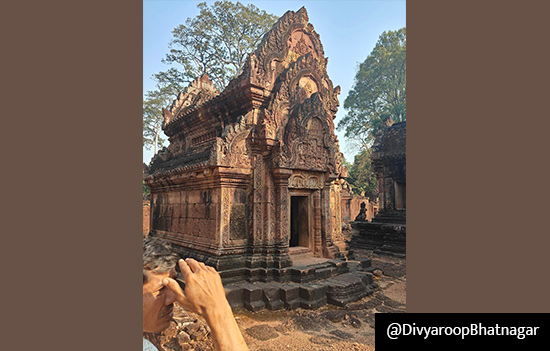
Finally, after lunch we went to see the Bantey
Srei Temple. Consecrated in 967 CE, the credit for the construction does not go to a king but to some of his courtiers. Built out of red sandstone, the carving is exquisite. It's a Shiva temple and one of the pediments has an amazing depiction of Shiva riding Nandi with Uma at his side. I've never seen anything like this. This temple is built on a much smaller scale than the later ones in the area but it is really beautiful.
Day 5
We bade goodbye to Siam Reap and drove
to Phnom Penh. This is a 5 hour drive through fields and farmland. Nearer Phnom
Penh, we saw the mighty Mekong river on whose banks the capital city is
situated. Phnom Penh first became the capital of Cambodia in the post Angkor
period in 1434 but did not remain so for long. Later, during the French
colonial regime, it regained its status.
Our first visit was to the Royal
Palace. The principal building houses the ceremonial jewels and has a
prized relic of Buddha as well as an Emerald statue of The Enlightened One.
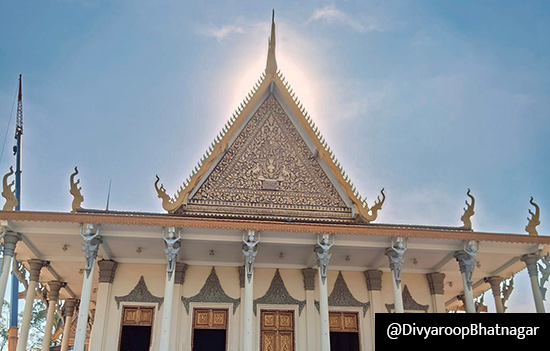
There is also an extensive frieze of the
Ramayan painted on a long wall running on three sides. This painting is showing
signs of deterioration. Perhaps the government of India could offer to help
with the restoration.
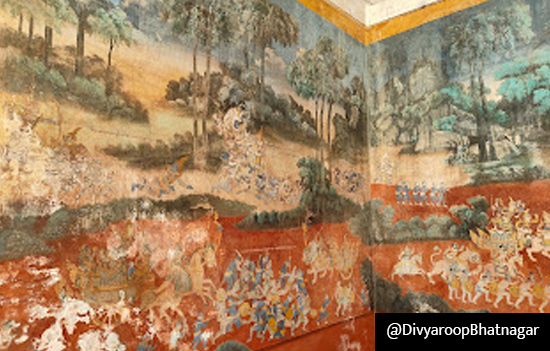
Day 6
We started the day with a visit to Wat
Phnom Daun Penh a Buddhist temple from which the city derives its name. The
theme of guardian lions (an animal never found in Indo China), Nagas, and the
roof supported by Apsaras and Garuda figures testifies to the inclusive nature
of Cambodian religious beliefs.
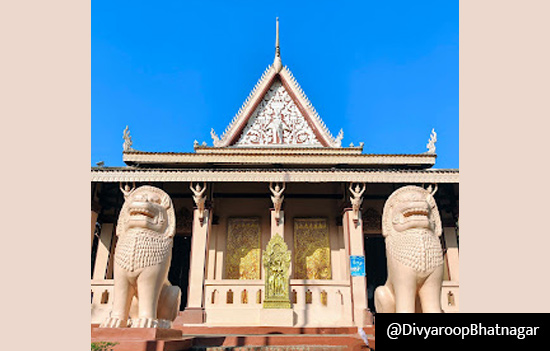
The highlight of the day was a visit to
the National Museum of Cambodia. I have rarely seen a better
collection of Indic art and culture even in India.
It's humbling and thrilling to see how Indian culture, religions, scripts and thinking had crossed the oceans thousands of km away in such detail and profusion over two thousand years ago. Clearly, the contacts and interaction were extensive and spread over a long time. There are many stories and legends about this.
One relates to an Indian merchant from
Kalinga who married a Khmer princess, Soma and became King Kaundinya I of
Funan, that comprises of most of modern day Cambodia centered around the Mekong
delta in the first century CE. Conversely, one of the Pallava kings in
Kancheepuram was a Prince from Cambodia/Vietnam, Nandivarman II in 731 CE. In
addition, there were widespread imports of priests, accountants, tax collectors
and the whole apparatus of state governance by Cambodia from India over a
period of more than 1000 years resulting in an Indianised society. Some of this
persists even today.
The exhibits at the National Museum were
beautiful. Here are some examples.
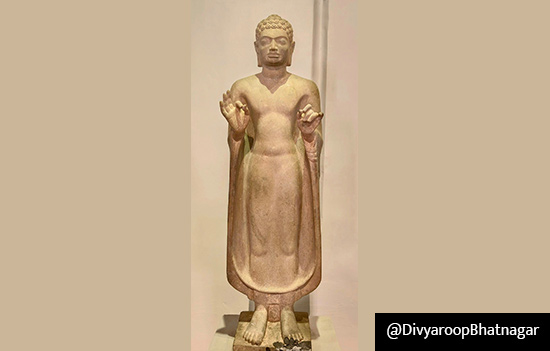 Buddha with the Mudras fully intact.
Buddha with the Mudras fully intact.
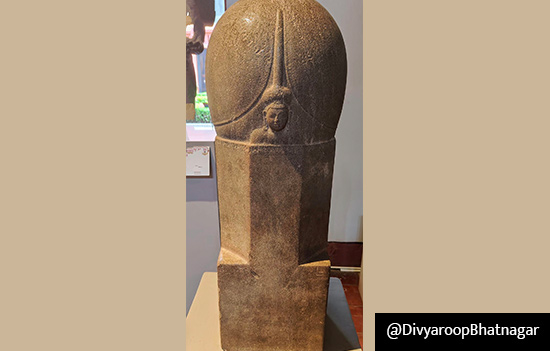 A 'Mukholinga'. This is a very unusual depiction of a Shivling. The square base denotes Brahma, the creator. The octagonal centre represents Vishnu, the preserver and the Linga on top is Shiva, the destroyer.
A 'Mukholinga'. This is a very unusual depiction of a Shivling. The square base denotes Brahma, the creator. The octagonal centre represents Vishnu, the preserver and the Linga on top is Shiva, the destroyer.
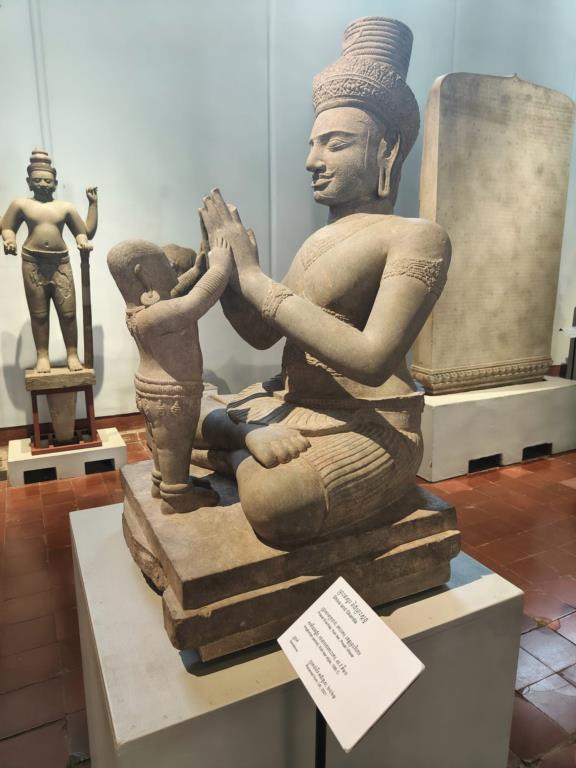 A delightful statue of Shiva playing with his son Skanda (Murugan).
A delightful statue of Shiva playing with his son Skanda (Murugan).
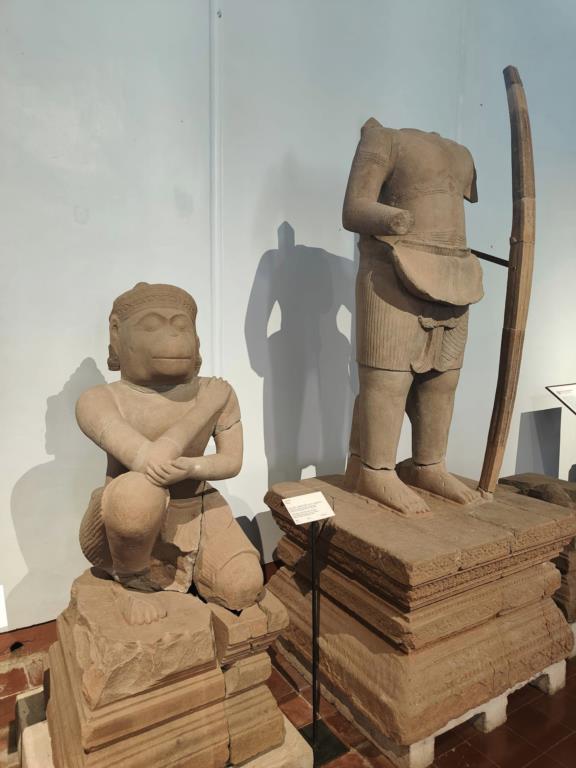 Ram and Hanuman.
Ram and Hanuman.
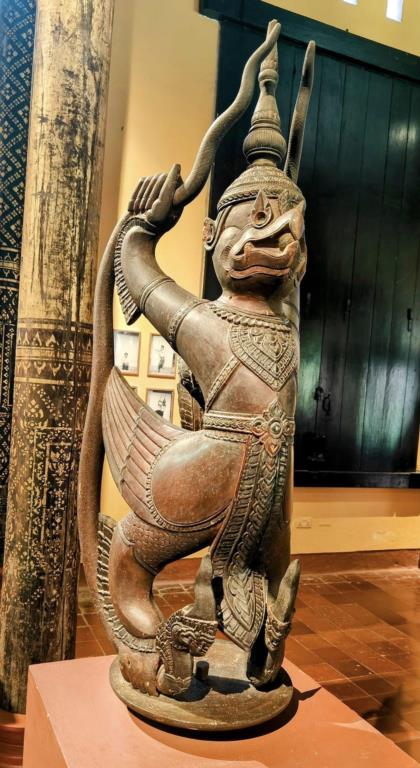 Garuda, the vehicle of Lord Vishnu
Garuda, the vehicle of Lord Vishnu
However, the key point that fascinated
me was the theme of inclusion, tolerance and synthesis that is visibly evident
in Cambodian temples from ancient times to the present day. In token of that
spirit, Nandi is still revered in a Buddhist state
as in this beautiful depiction outside the National Museum.
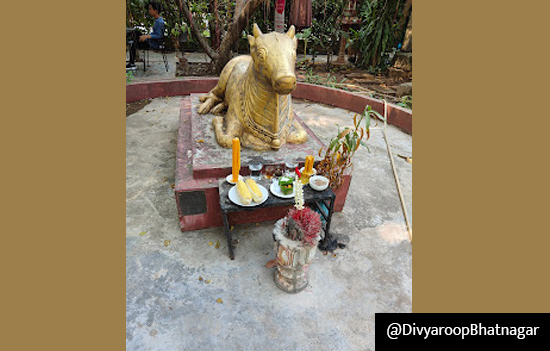 Nandi
Nandi
In pre Angkorian times both Hindu and
Mahayana Buddhism entered Cambodia via contacts with merchants from India. Most
of the Angkor kings were Hindus with a few Mahayana Buddhists in between. After
the 13th century CE, Theravada Buddhism came into Cambodia. King Jayavarman VII
sent his son to Sri Lanka to be ordained as a Buddhist priest. Subsequently,
the whole country converted to Theravada precepts in a smooth and non violent
fashion.
The evolution of the Cambodian script is also interesting. Earlier examples under Yasovarman I (889–910 CE) are clearly identifiable as being derived from North Indian scripts while the later versions appear to be derived from an old South Indian script, Grantha. The modern Cambodian script has much in common with South Indian scripts.
An example of a North Indian based
script used by Yasovarman 1.
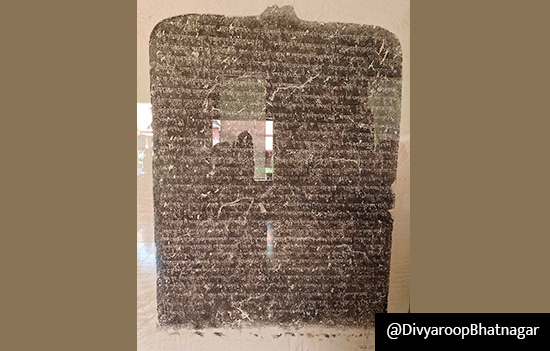
An example of an ancient Cambodian
script based probably on Grantha, the precursor to modern South Indian
languages. This script later developed into the modern Cambodian script.
We flew out of Phnom Penh airport to Ho
Chi Minh City later in the evening, ending a wonderful stay in Cambodia.
Where did we stay?
We stayed at
the Templation Hotel in Siamrep and Plantation Urban Hotel in Phnom Penh. Both
excellent.
What were costs like?
Hotels are
around $100 per day double room including breakfast. Meals are around $10 per
meal per person. Car and driver $120 per day. Guide $75 per day. Entry tickets
you will land up paying around $100 per person for the trip.
The Cambodia, Laos, Vietnam area is collectively known as Indo China and was administered as such under French colonial rule. Going by our experience in Cambodia, it appears that the influence of China was at best a tepid one. India's influence was clearly paramount in ancient times.
I hope you liked this travelogue. You
may like to take a look at my published books as well. Just click on the links
below to buy the books from Amazon.
Author
Divyaroop Bhatnagar is an Author, Observer, Analyst, Sceptic, Alternate View.
To read and buy his books The
Mussoorie Murders AND Journey
to the Hills and other Stories
This piece was first published on author’s blog and Here
eSamskriti has obtained permission from author to share. Article and pictures
are copyright author.
Also
read
1. Shaiva
Temples in Cambodia
2. The
India Cambodia Connection
3. Albums
Cambodia
4. About
My Son Sanctuary, Vietnam
5. Harmonious
blend of Hindu, Buddhist and Shinto strains in Japan
6. Space and Cosmology in Indian Temples – Angkor Wat
7. Promoting
tourism to Southeast Asia should be an instrument of foreign policy